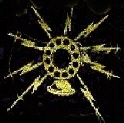
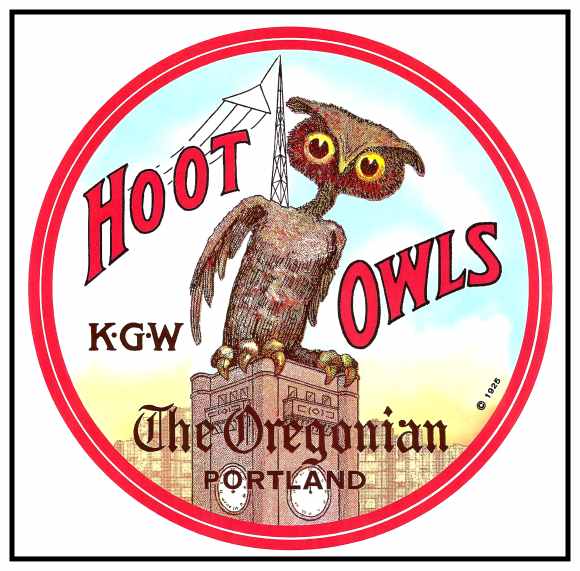
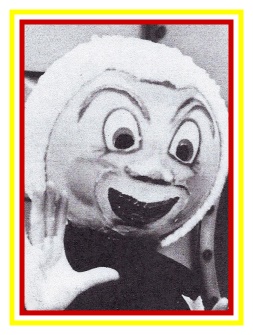
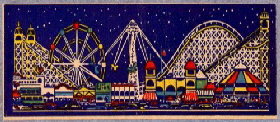

 |
 |
 |
 |
|||
 |
||||||
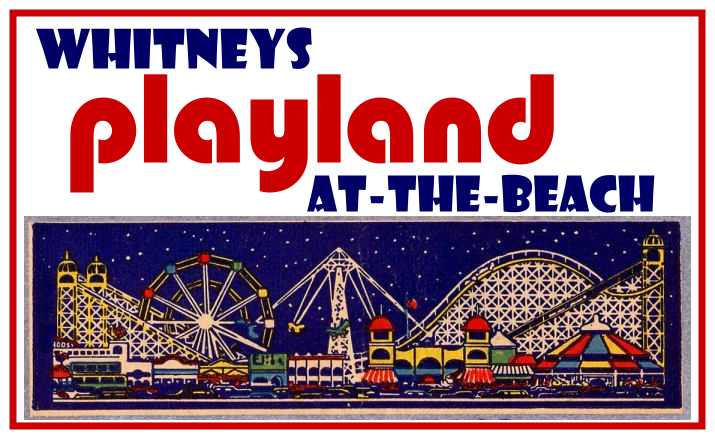 |
||||||||||||||||||||
|
|
||||||||||||||||||||
 |
||||||||||||||||||||
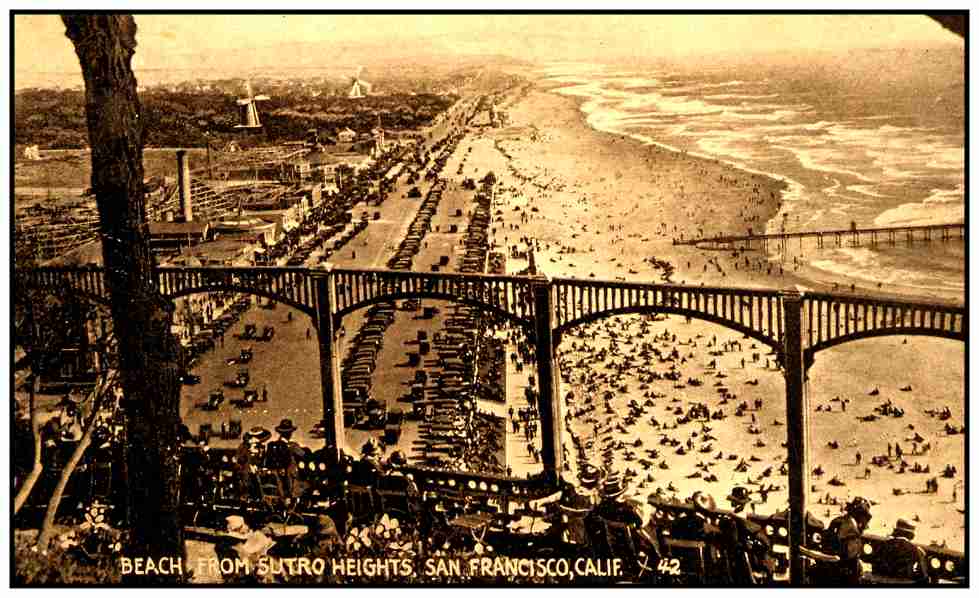 |
||||||||||||||||||||
|
Playland-at-the-Beach as seen from Sutro Heights. |
|
The area that was Playland began as a 19th Century squatter’s settlement, “Mooneysville-by-the-Sea”, at the western edge of San Francisco. By 1884, a steam railroad was in place to bring people to the Ocean Beach Pavilion for concerts and dancing. By 1890 there were three streetcar lines to Ocean Beach: the Ferries and Cliff House Railroad, the Park & Ocean Railroad and the Sutro Railroad. The Cliff House opened in 1863 and German immigrant Adolph Sutro opened an outdoor saltwater aquarium with a unique pumping and drainage system utilizing a series of tunnels in 1887. The Cliff House, which opened in 1863, and Sutro Baths and Museum, which officially opened on March 14, 1896 with an opening day crowd of 7,000 people in attendance, were very popular and they drew many thousands of visitors. Sutro Baths was the “Largest Salt Water Natatorium in the World” and it was built to hold as many as 10,000 bathers and another 15,000 spectators at one time. Sutro Baths was completed in 1894 but a dispute with Southern Pacific over the cost of a streetcar ride to Sutro Heights delayed the official opening until 1896. To help attract more people to Sutro Baths, the short-lived “Sutro Pleasure Grounds”, also known as Merrie Way, opened with the Firth Wheel (Ferris Wheel) and two indoor attractions: the Mystic Maze house of mirrors and the Haunted Swing that Adolph Sutro had purchased when the Midwinter Fair of 1894 at nearby Golden Gate Park sold off its holdings. By 1898, Sutro’s midway had grown to include a Scenic Railway and several other amusements as well as a cluster of chowder stands. |
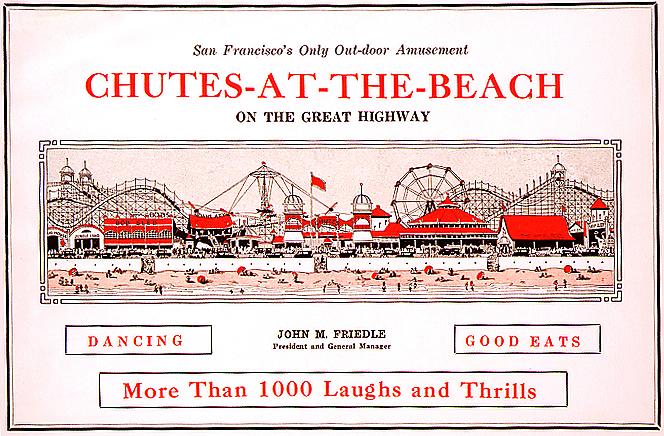 |
|||
|
San Francisco was becoming the Playground of the West Coast and in 1913, Arthur Looff leased a plot of ground for a carousel and its house at the Chutes-at-the-Beach. Looff’s Hippodrome was the first permanently installed concession at Ocean Beach. The Hippodrome was an elegant 68-horse merry-go-round with a $5,000 organ, a staggering amount at that time. A few other concessionaires set up rides there over the next few years. |
|||
|
|
Aerial view of Playland-at-the-Beach showing the Cliff House behind. |
|
|
Playland-at-the-Beach as seen from the Cliff House. |
|
Brothers Leo and George Whitney came to San Francisco and opened a photographic concession in 1923, pioneering a rapid photo-finishing process that allowed people to take pictures home after a few minutes rather than having to wait days for the film to be developed and images printed. By 1924, the Whitney brothers owned four shooting galleries and a souvenir shop in addition to the quick-photo studio. Among the more popular concessions was the Fun House, erected in 1924. Laughing Sal's hideous cackle echoed throughout the park, summoning patrons, many of whom still remember the Fun House's mirror maze, the air jets, the topsy-turvy barrel and the three-story climb up to the top of "the longest, bumpiest indoor slide in the world." George Whitney became manager of the amusement park in 1926 and promptly changed the name to Playland-at-the-Beach. During the Depression, when concessions began to fail, the Whitney brothers bought them from the independent concessionaires. George was able to buy the the roller coaster in 1936 and the merry-go-round in 1942. Eventually, they bought the Cliff House and Sutro Baths, turning it into an ice rink. |
|
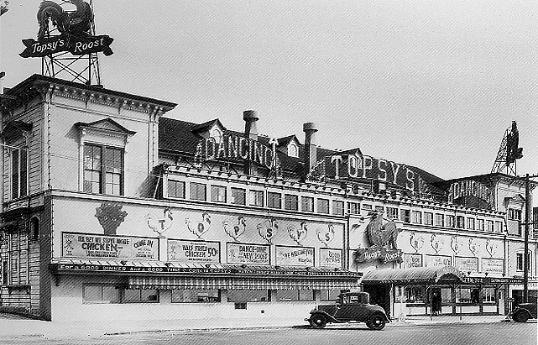 |
|
George Whitney opened Topsy’s Roost in 1929 and it soon became San Francisco’s most favorite spot at Playland-at-the-Beach. Driving south along the beach from the Cliff House, the first building you came to was Topsy’s Roost, a very popular Chicken Dinner House and Nightclub. You could dance to a live orchestra and there was seating on the main floor as well as the balcony. If you were sitting on the balcony level and you wanted to dance, there were slides to take you right down onto the dance floor. |
|
|
|
|
Topsy’s Roost was the brightest spot in San Francisco. |
|
|
There is no place in the world like Topsy’s Roost. |
|
|
Topsy’s Famous Slides and South Tiers of Roosts and Coops. |
|
If you were sitting on the balcony level and you wanted to dance, there were slides to take you right down onto the dance floor. |
|
|
Topsy’s Showboat and Levee. |
|
You could dance to a live orchestra under the Showboat Stage. |
|
|
The East Tiers at Topsy’s Roost. |
|||
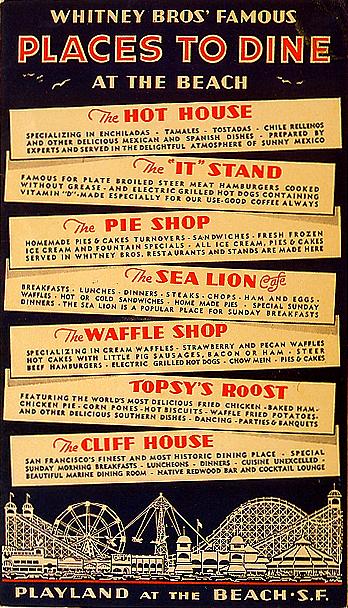 |
|||
|
Playland took up three city blocks and in 1934, the Midway had 14 rides, 25 concessions and four restaurants besides Topsy’s Roost. |
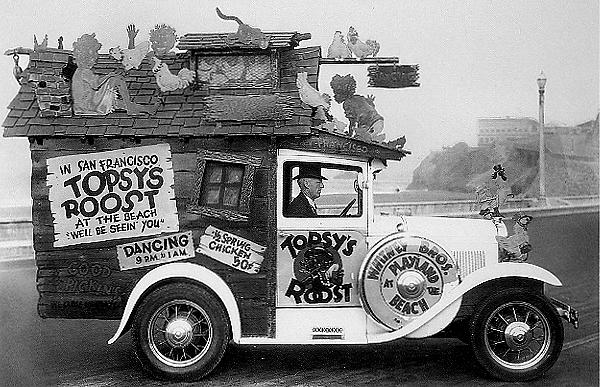 |
||||||
|
George Whitney used this truck to advertise his Whitney Bros.’ Playland-at the-Beach. |
||||||
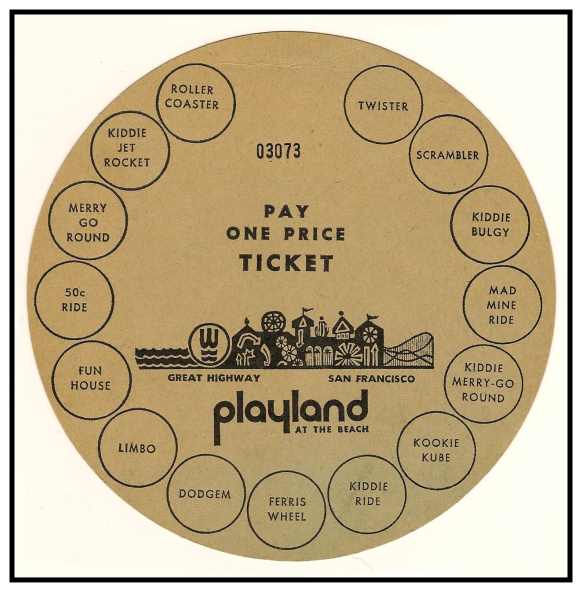 |
||||||
|
Eventually Topsy’s Roost closed and the space became Skateland and later, the Slotcar Raceway. |
||||||
|
George and Leo Whitney owned and operated Playland for more than 40 years. After George's death, Playland was sold to developer Jeremy Ets-Hokin. Playland was torn down in 1972 and now the property is occupied with condominiums. |
|
Thanks to Marilyn Blaisdell for providing some of these photos. |
|||||||||
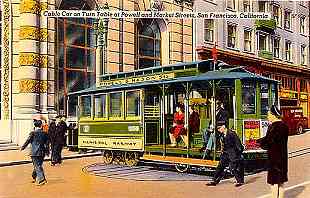 |
|||||||||
|
Last updated 10-18-16 |
|||||||||
|
copyright © 2017 PdxHistory.com |